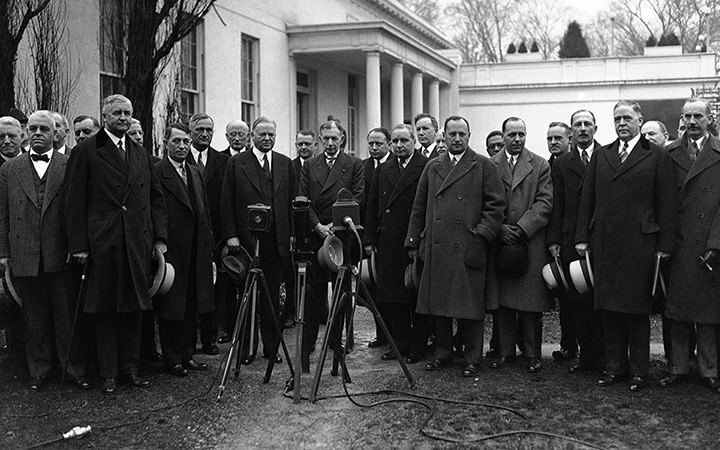Banking Acts of 1932
February 1932
Two pieces of legislation were signed by President Herbert Hoover in early 1932 to address concerns about the Federal Reserve's structure and mission.

President Herbert Hoover and reconstruction leaders meet in Washington on February 6, 1932, to discuss the president's contemplated campaign against national hoarding (Photo: Associated Press)
by Michael Gou, Gary Richardson, Alejandro Komai and Daniel Park
Note: As of February 2022, this essay has been split into two revised essays on the two laws it covered: the Banking Act of 1932 and the Reconstruction Finance Corporation Act.

 X
X  facebook
facebook
 email
email